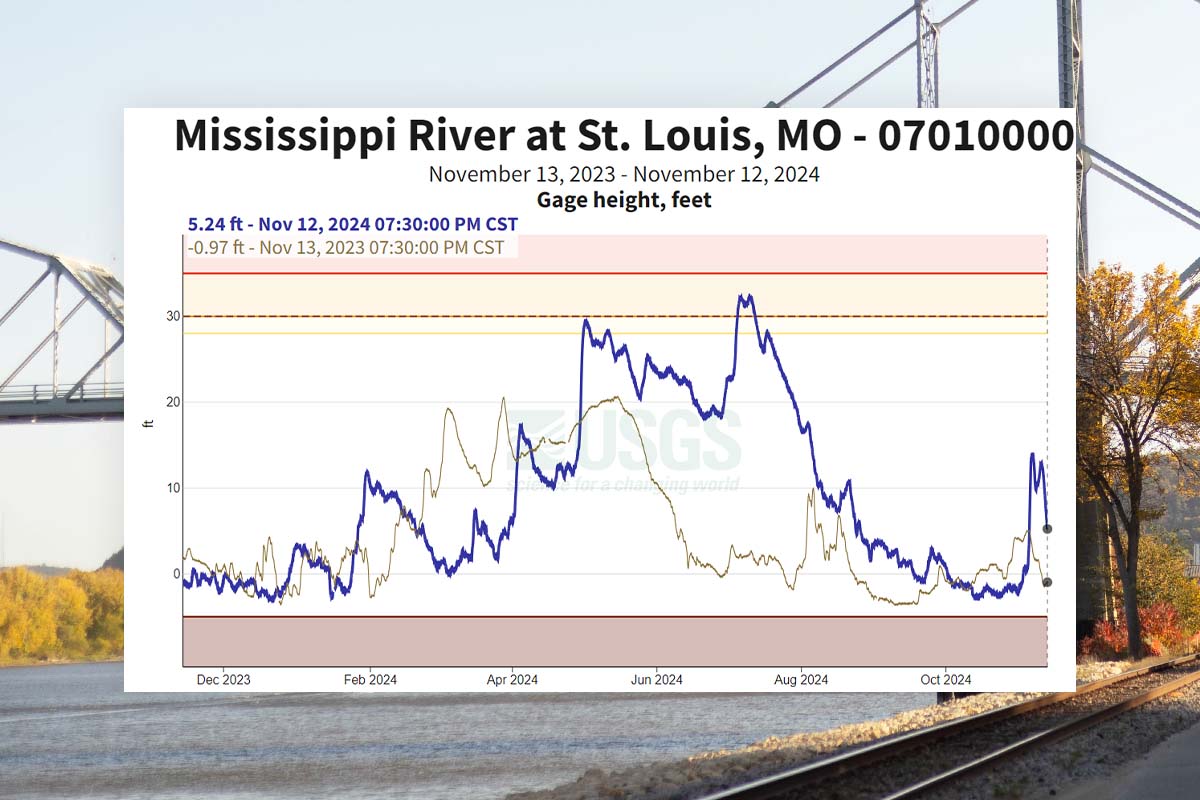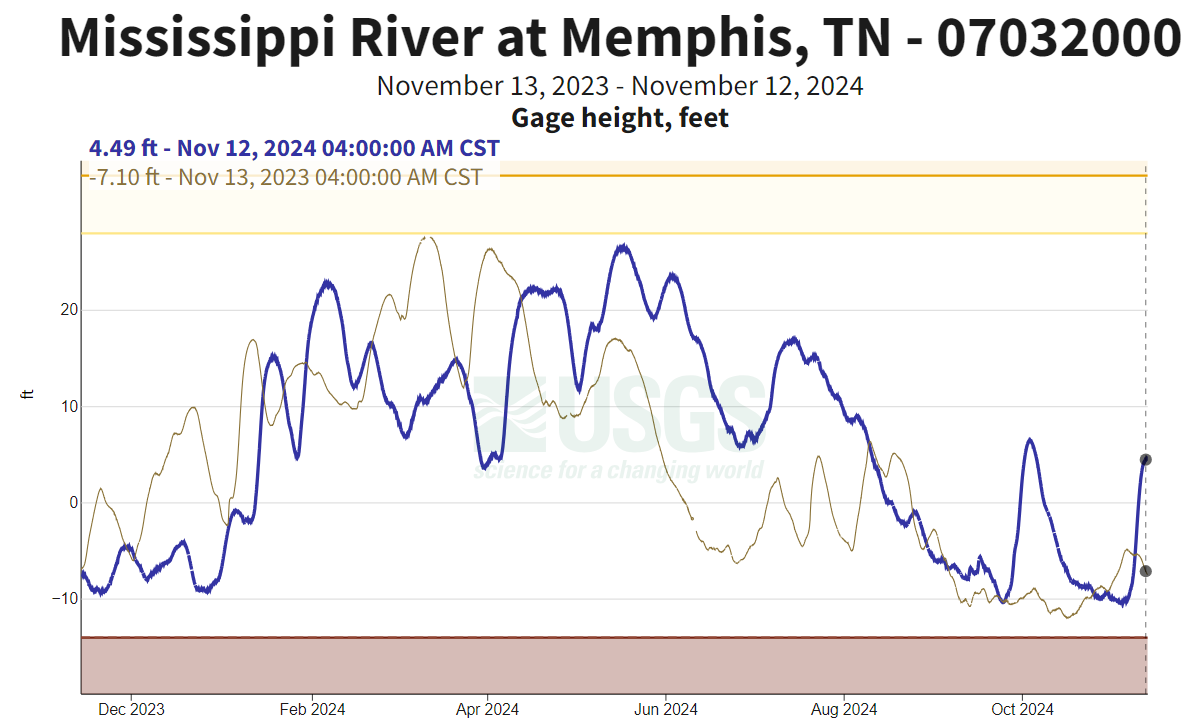
(Photo: United States Geological Survey)
It's ‘Game Time’ on the Mississippi River
November 21, 2024
Getting soybeans to their destination has gotten a little easier.
According to the Soy Transportation Coalition (STC), the U.S. Geological Survey (USGS) is indicating water levels on the Mississippi River are on the rise.
STC Executive Director Mike Steenhoek says the river “has rebounded considerably subsequent to the rainfall received throughout the region in late October and beyond.”
The lowest level at the river gauge in St. Louis was -2.7 feet on Oct. 14, while the lowest level in Memphis was -10.38 feet on Nov. 3 (see graphs).


According to the USGS, the U.S. Coast Guard has lifted restrictions on the lower Mississippi River for barge transportation. Barge companies have increased their operating draft (due to increased water depth) and the number of barges attached together to form a single unit (due to increased channel width).
“We are very pleased to see a resumption of precipitation throughout much of the Mississippi River watershed,” says Steenhoek. “This is obviously helpful to farm ground, but it also is extremely beneficial to maintaining water levels during a critical time of the year for soybean exports. This time of the year – especially the month of November – is ‘game time’ for soybean exports. Having a major link in our supply chain – the Mississippi River – returning to normal capacity is a most welcome development.”
Low levels limited barge transportation
Last month, Steenhoek and the STC noted that low water levels on the Mississippi River were hampering the shipping of soybeans and other commodities for export.
And it proved to be the third straight year where low river levels on the Mississippi were causing issues for shipping.
“We experienced low water in both 2022 and 2023 and now, once again, in 2024,” Steenhoek says.
He noted that lower water levels on the Mississippi means fewer beans can be shipped to global markets around the world.
“For each foot of draft reduction on the river, an individual barge is loaded with 7,000 fewer bushels (200 tons) of soybeans,” he says. “In certain areas of the river, we are seeing several feet of draft restrictions due to low water. In addition, the lack of water will narrow the shipping channel, which limits the number of barges that can be attached together to form one single flotilla or tow.”
Steenhoek says depending on the location in the river, tow sizes had been reduced from 10-15% at minimum and upwards of 30-40%.
Better news
About 60% of U.S. grain exports are transported by barge to New Orleans via the Mississippi River. Barge transportation, of course, is a more efficient way to ship soybeans, corn and wheat. According to the U.S. Department of Agriculture (USDA), a typical group of 15 barges lashes together carries as much cargo as about 1,000 trucks.
The USDA’s Grain Transportation Report showed that for the week ending Nov. 9, barged grain movements totaled 766,095 tons. This was unchanged from the previous week but 6% more than the same period last year. For the same week, 499 grain barges moved down river. There were 981 grain barges unloaded in the New Orleans region, 22% more than last week.
Weather forecast
Now through Thanksgiving, the forecast along the Mississippi River and for most of Iowa, calls for mild temperatures with mostly cloudy skies. High temperatures will mainly be in the 30s except for this weekend where temperatures will be in the 40s.
In terms of precipitation, only a slight chance of any rainfall or snow is expected.
Come early December, temperatures will only reach into the 20s with lows in the teens.
And as far as drought conditions are concerned, most of Iowa is listed as being abnormally dry or in the moderate drought category.
According to the latest U.S. Drought Monitor report, only a small part of northwest Iowa is categorized as being in a severe drought, while a few counties in south central Iowa is listed as being drought-free.
Back